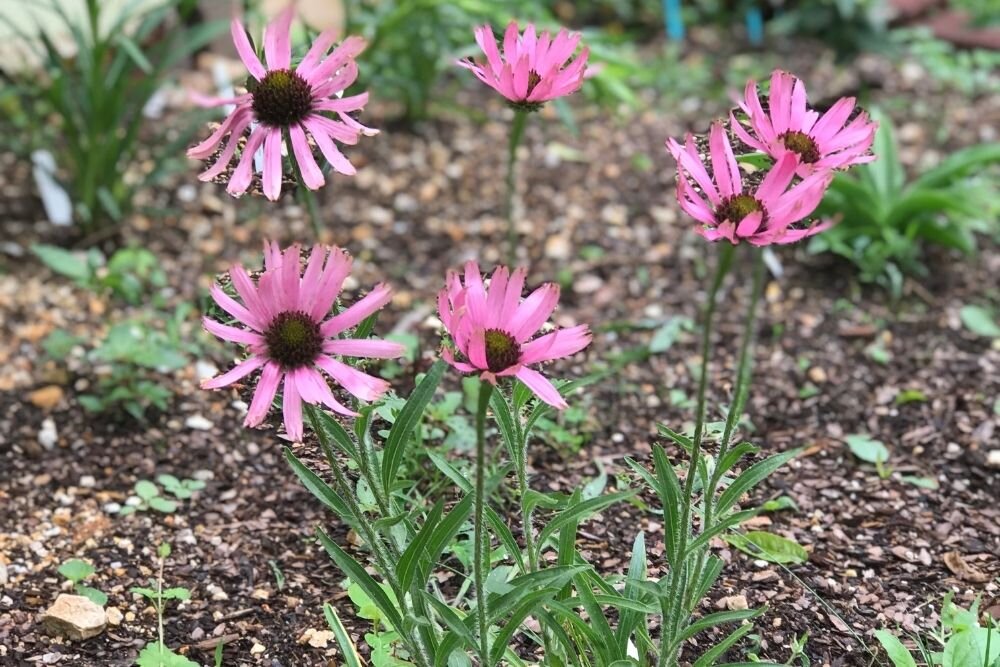Tennessee Coneflower
image by Dylan Hackett
Scientific Description: Tennessee Coneflower (Echinacea tennesseensis) was recently removed from the Federal Endangered Species Act list in 2011. It is a perennial member of the Aster Family (Asteraceae) and is easily grown in medium moist, well-drained soil in full sun. It grows to a height of 1.5 to 2.5 feet and a spread of 1 to 2 feet. It blooms from May through August and tolerates dry soils, clay soils, rocky soils and deer. It has dark green, hairy, lanceolate leaves, which are arranged in a whorl at the base of the stem and only a few stem leaves. The flowers have purple rays and copper-colored center cones. The daisy-shaped flowers attract many species of insects, especially butterflies.
While this plant grows naturally in Zone 5, it is hardy in zones 4-8 at least; Chattanooga is in zone 7.
Habitat Value: Tennessee Coneflower attracts large numbers of insects and is pollinated by them. Thus, a wide variety of birds are also attracted to the coneflower to feast on the insects and, later, the seeds.
Deadheading will extend flowering for pollinators but eliminates seeds for birds.
This plant has no significant disease or insect problems, although Japanese beetles are sometimes found on them.
Landscape Value: By Matt Whitaker of WMWA Landscape Architecture
Tennessee Echinacea is a worthy plant for any garden, but especially so if you live in Tennessee. This coneflower is endemic to a few sites near Nashville with shallow limestone soils. Therefore, it is one of the few native plants (these natives often come from similar sites) that can tolerate higher pH soils, like those found in urban environments. This plant’s toughness makes it one of the most durable for heat, humidity and poor soils. I planted the handful I could get last year in the Virginia Avenue Park (at the end of Avenue in St Elmo). This abused little plot of soil has patches of gravel, shallow asphalt, and every other kind of urban debris you can imagine. Several of the TN coneflower grew from 4” to 2 feet in a year. A few, in the worst soils, are less than a foot around, with only a handful of blooms, where many plants would not have lived at all.
Note, two things it does not tolerate are wet soils and shade.
This is perhaps the best of all the coneflowers for home gardens because its shorter habit keeps it from flopping over, and its blooms dry beautifully in place, holding most of their color. TN coneflower will cross with other coneflowers and produce hybrids. If you want to keep seedlings or share them with others, you need to keep away other coneflowers so you have true TN coneflower. Reflection Riding Nursery is selling seed grown plants now and has started year-round cultivation of this coneflower.


